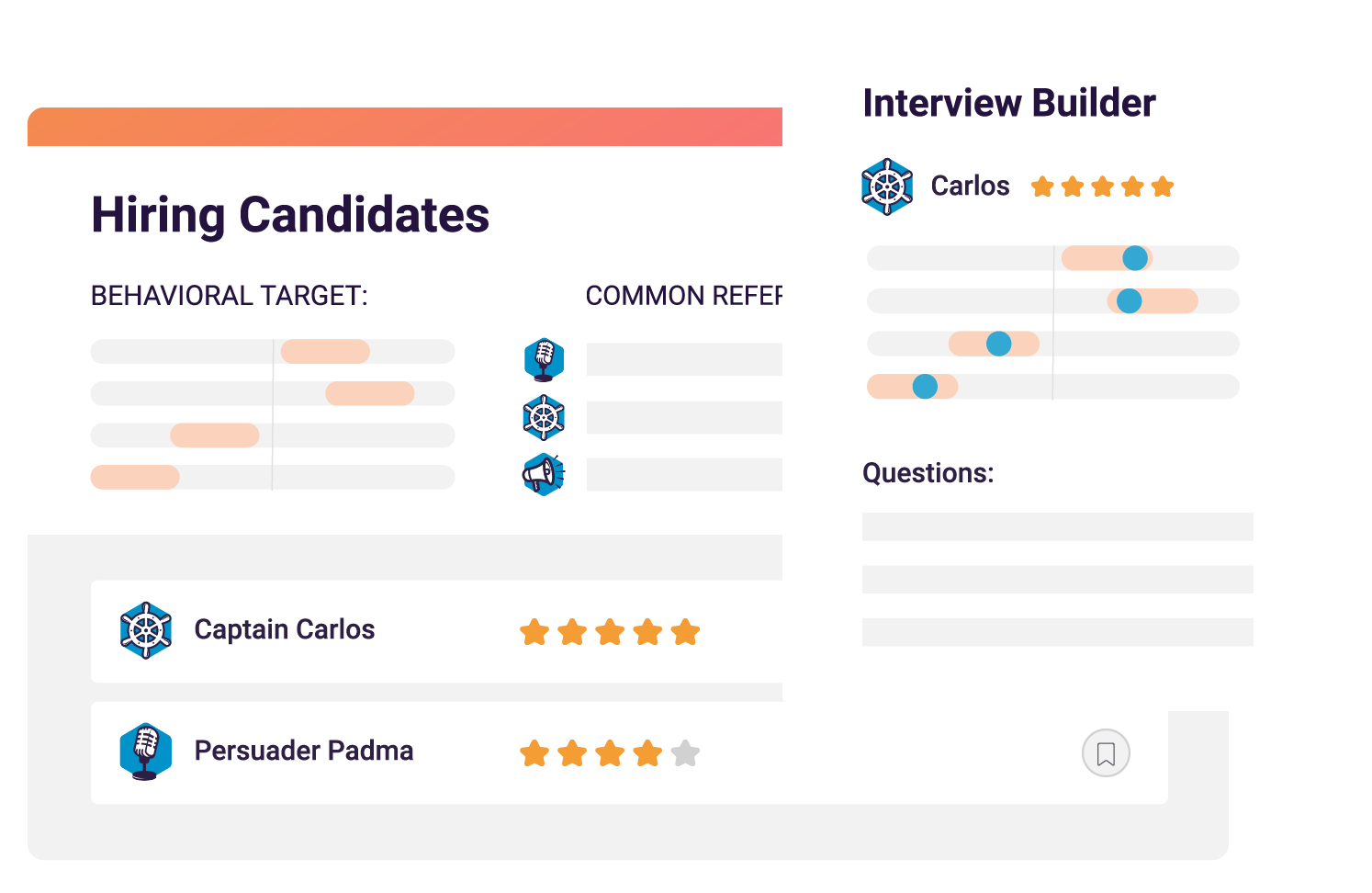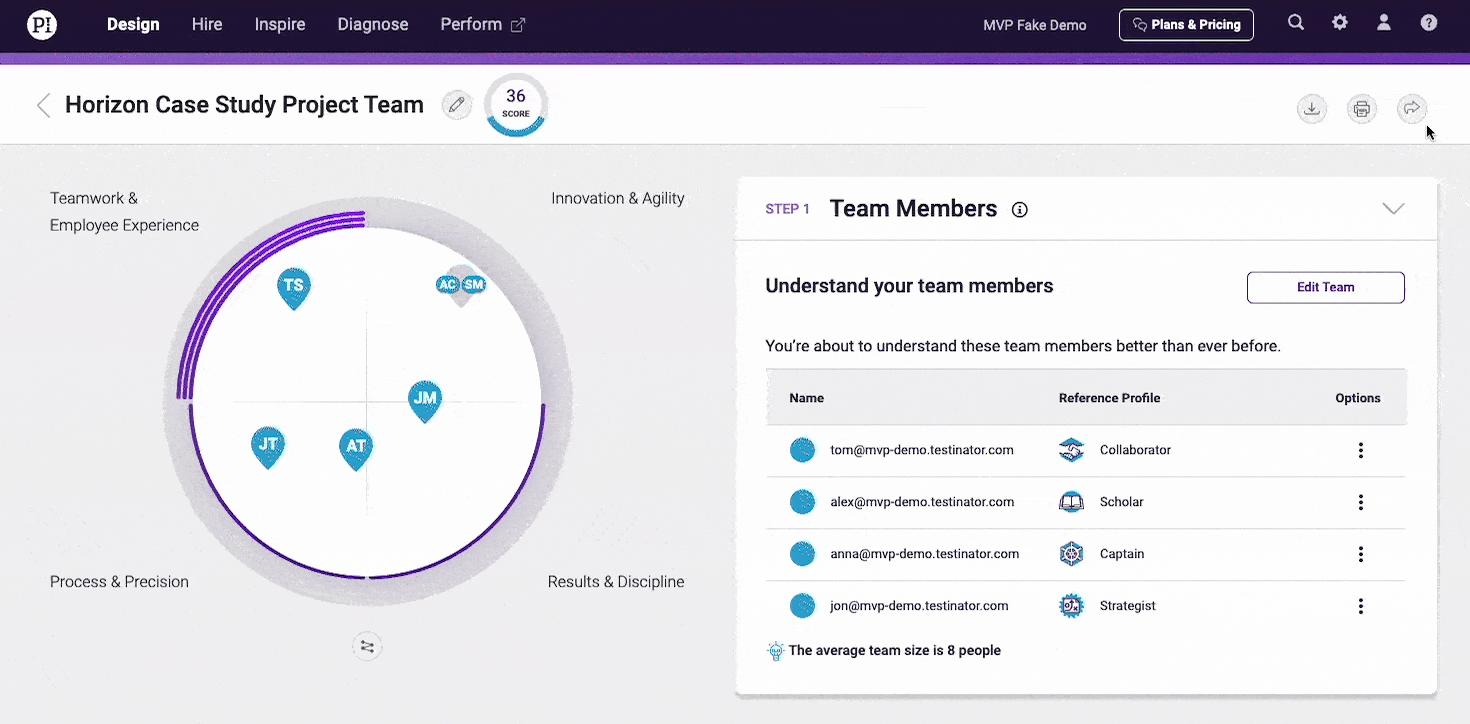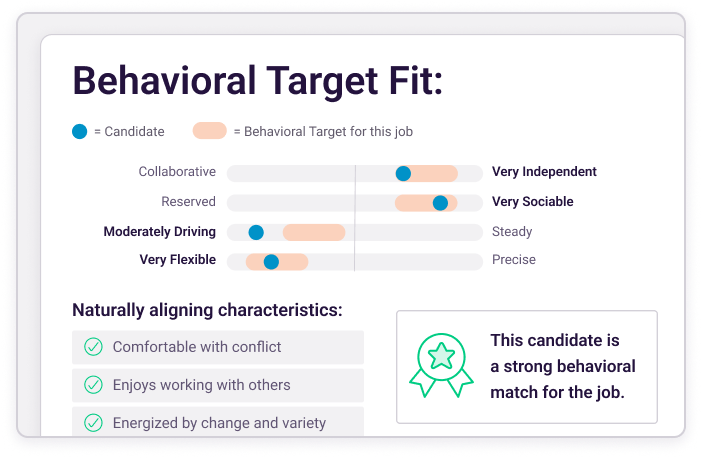Workplace trauma refers to the emotional and psychological distress that employees can experience due to harmful and toxic work environments. This kind of trauma is not limited to physical harm—it can occur due to a wide range of factors that impact a team member’s mental and emotional well-being.
As a leader or human resources manager, workplace trauma is the absolute last thing you want to see. Aside from the very real legal and ethical obligations you have to preserve and encourage the mental and physical health of your employees, workplace trauma leads to decreased engagement and productivity, and increases the likelihood of turnover.
The longer workplace trauma is neglected, the more toxic the work environment becomes, and the more team morale and the company’s bottom line suffer.
In this guide, we dig into workplace trauma, its signs and symptoms, and how you can address trauma within your organization effectively.
What might trigger workplace trauma?
A number of different things can trigger workplace trauma, including:
- Verbal abuse (constant belittling and name-calling by a supervisor)
- Bullying and harassment (spreading rumors, intimidation, and exclusion)
- Sexual harassment (unwanted sexual advances or comments)
- Discrimination (based on race, gender, sexual identity, age, religion, disability, and more)
- Microaggressions (subtle or unintentional acts of discrimination, such as touching an African-American or Black coworker’s hair “because it’s so curly!”)
- Passive-aggressive behavior (sabotage and indirect communication that undermines collaboration)
- Physical assault (being attacked or physically harmed by a colleague, client, or supervisor)
- Witnessing violence (observing a violent incident in the workplace, such as a robbery or physical altercation)
- Workplace accidents (witnessing or experiencing a serious accident on the job that results in injury, disability, or death)
It is essential to remember that what may be traumatic for one employee may not necessarily be traumatic for another. Trauma is subjective, and we all have our own unique triggers. It’s also possible that the cumulative effect of multiple different stressors, however minimal they may seem on their own, can lead to workplace trauma.
Any and all of the above triggers point to a toxic work environment. Curious about your own workplace? Check out our guide to toxic work environments.
Prepare for the future of work
Check out our latest ebook – the HR Field Guide to the Future – and assess your team’s readiness and risk for the forces driving business action.
Identifying signs and symptoms
Workplace trauma and the kinds of toxic work environments that cause it can be subtle and insidious, but there are some telltale signs and symptoms.
Consider your own workplace. Are employees satisfied and engaged, or are they burnt out and checked out? Do coworkers avoid communicating with each other? Do employees seem tired, irritable, and resentful? Does your organization experience a lot of absenteeism and turnover?
These are clear signs that all is not well.
It’s also important to keep in mind that the effects of workplace trauma affect individuals differently. Some may display physical symptoms like headaches, fatigue, and stomach upset, which contributes to absenteeism; some may become emotional, and some employees may show no sign at all.
Workplace trauma guide for HR and team leaders
1. Identify.
Identifying workplace trauma requires a proactive and empathetic approach. Here are some actionable steps to identifying workplace trauma as an HR person or team leader.
Pay close attention to your team members. Are there any changes in their behavior? Has absenteeism increased, or has productivity hit a standstill? Schedule regular one-on-one meetings to ensure the lines of communication always stay open. Check the pulse of your team regularly to identify any potential problem areas.
Software can be a significant asset here, as you can use it to schedule regular check-ins, or leverage anonymous surveys to gather continuous feedback without signaling anyone out. These regular check-ins and surveys can help to identify any changes in behavior or new trends that suggest a problem could be on the horizon.
Many tools can also generate reports on key metrics related to workplace trauma, such as absenteeism rates, employee feedback scores, and the number of incidents reported, providing you with insight into employee engagement and satisfaction.
2. Address.
Once you’ve identified problem areas, addressing workplace trauma is the next step.
If an employee has made you aware of any trauma they are experiencing, it’s essential to take immediate, confidential action. Offer counseling services as well as time off to the employees affected. Conduct a thorough investigation into the issue, and then take the steps necessary to rectify it.
Develop a return-to-work plan to allow employees to gradually return to work when they are able, and maintain contact with them throughout their time off so that you can monitor their progress and determine their needs. When they do return, offer accommodations to support their recovery.

3. Prevent.
Preventing workplace trauma comes down to fostering a company culture that promotes psychological safety, respectful behavior, and open communication. Employees must understand that they can speak up without fear of retaliation.
This means establishing clear policies and guidelines around effective communication and collaboration and then enforcing them. Utilize software to ensure you stick with regular one-on-one meetings and continue to use anonymous surveys to make sure that all employees feel engaged, satisfied, welcome, and safe.
Provide training and education on workplace trauma as well as conflict resolution, offer resources and support for employee mental health, and develop clear reporting procedures.
If your organization does not have a clear set of company values, sit down with team leaders and collect feedback from employees to develop them. Once they’re developed, or once you’ve revisited and tweaked them, put them up around the office or in online communication channels. Begin each meeting by reviewing your company values to get everyone on the same page.
Workplace trauma management case study
Club16 Trevor Linden Fitness featuring She’s FIT! provides accessible, community-oriented gyms in British Columbia. The company saw significant and sustained growth, but its rapid expansion put significant stress on its staff, who soon became overworked and disengaged to the point many left the company.
Club16 first used PI Perform to conduct employee experience surveys to determine the root cause of employee disengagement and attrition. The survey revealed that employees didn’t feel connected to the mission of the company, and they didn’t understand the details behind certain decisions and the accompanying goals.
While the feedback wasn’t all easy to hear, CEO Chuck Lawson and his partner Trevor Linden were committed to taking critical feedback to improve the overall health of the company and its team.
Based on the feedback, Club16 restructured its entire organization and redefined key roles, giving HR a seat at the decision-making table.
PI Perform has since become an essential tool for Club16 that they used to drive measurable improvements in team communication, alignment, and overall business impact. It became a staple in daily meetings and set the tone for the company’s larger goals of developing new leaders, improving visibility, and reducing attrition and turnover.
Within months, Club16 saw significant improvements in team cohesion and communication. Employees, from the front desk receptionists to the front office, began to feel recognized and celebrated for their efforts, which made them feel like they were a genuine, essential part of the team. This, in turn, encouraged them to rededicate themselves to achieving the larger goals of the company.
Club16 has since reduced its employee attrition rate by double-digits and saved more than $2.2 million in employee turnover costs, all while continuing to expand its business in the Pacific Northwest.
Learn more about Club16’s journey with PI Perform.
Helpful resources for those who experience workplace trauma
If you or a team member is experiencing workplace trauma, there are a number of free helpful resources online. Use these to share with colleagues when relevant or to inform your own workplace policies, resources, and tools surrounding workplace trauma.
- Beyond the Incident: Dealing with Workplace Trauma — U.S. Department of Labor
- A Trauma-Informed Approach To Workforce — National Fund for Workforce Solutions
- TOOLKIT: Trauma-Informed Workplaces — Campaign for Trauma-Informed Policy and Practice
- National Center for PTSD
- Workplace Strategies for Mental Health
- Free Trauma-Informed Resources — Crisis and Trauma Resource Institute








